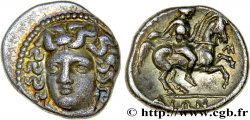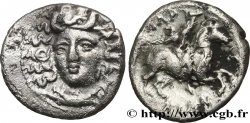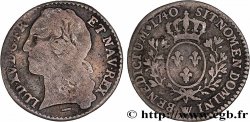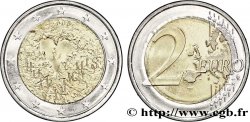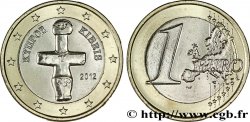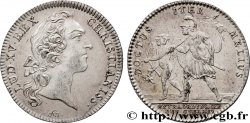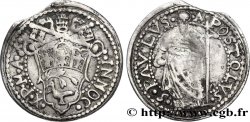v19_0067 - TESSALIA - LARISSA Drachme
MONNAIES 19 (2004)
Prezzo di inizio : 200.00 €
Valutazione : 300.00 €
Prezzo realizzato : 200.00 €
Prezzo di inizio : 200.00 €
Valutazione : 300.00 €
Prezzo realizzato : 200.00 €
Tipo : Drachme
Data: c. 350 AC.
Nome della officina / città: Thessalie, Larissa
Metallo : argento
Diametro : 18,5 mm
Asse di coniazione : 4 h.
Peso : 5,77 g.
Grado di rarità : R2
Commenti sullo stato di conservazione:
Beau portrait, mais avec un écrasement et un coup sur le nez. Frappé sur un flan relativement étroit, mais bien centré au revers. A été légèrement nettoyé
N° nelle opere di riferimento :
Diritto
Titolatura diritto : ANÉPIGRAPHE.
Descrittivo diritto : Tête de la nymphe Larissa de face tournée de trois-quarts de face à gauche, les cheveux retenus par un bandeau (l'ampyx).
Rovescio
Titolatura rovescio : LÉGENDE PARTIELLEMENT INVERSÉE.
Descrittivo rovescio : Cheval paissant à droite, levant l'antérieur gauche.
Legenda rovescio : SAIWN/LARI
Commento
Poids léger. Ce type est beaucoup plus rare avec la légende inversée. Cet exemplaire sur un flan relativement étroit tout en étant relativement complet nous montre la maîtrise artistique du graveur qui a su habilement adapter son sujet à la forme circulaire du flan, tant au niveau du droit, où la chevelure vient harmonieusement occuper l’ensemble du flan et au revers, où le cheval semble se cabrer.
Light weight. This type is much rarer with the inverted legend. This example on a relatively narrow flan while being relatively complete shows us the artistic mastery of the engraver who knew how to skillfully adapt his subject to the circular shape of the flan, both on the obverse, where the hair harmoniously occupies the entire flan and on the reverse, where the horse seems to rear up
Light weight. This type is much rarer with the inverted legend. This example on a relatively narrow flan while being relatively complete shows us the artistic mastery of the engraver who knew how to skillfully adapt his subject to the circular shape of the flan, both on the obverse, where the hair harmoniously occupies the entire flan and on the reverse, where the horse seems to rear up








 Segnalare un errore
Segnalare un errore Stampate la pagina
Stampate la pagina Condividi mia selezione
Condividi mia selezione Fai una domanda
Fai una domanda Consegnare / vendere
Consegnare / vendere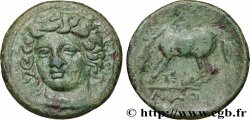
 Descrittivo
Descrittivo
